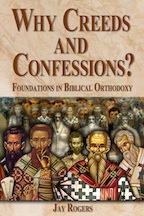Here are some of my latest comments relating to some of the articles and video projects found at The Forerunner. Check back for my thoughts on eschatology, world missions, God’s Law and Society, pro-life activism, evangelism testimonies, Neo-Puritanism, revival and spiritual awakening, church history, and so on. Use the navigation sidebar to see Forerunner Blog articles by category or see the blog archive for the category listing.
The Venezuela Strategy: A Monetary Bailout Disguised as Geopolitics
President Trump’s attempted seizure of Venezuelan oil reserves—valued at approximately $10 trillion—is not simply a resource grab or a foreign policy maneuver. I argue that it is a desperate structural intervention necessitates by the United States’ crippling $38.5 trillion …
Read more
Varn Vlog: Jay Rogers on Aleksandr Dugin's _The Fourth Political Theory_
Varn Vlog: Jay Rogers on Aleksandr Dugin's _The Fourth Political Theory_ Click play to connect to youtube Varn Vlog: Jay Rogers on Aleksandr Dugin’s The Fourth Political Theory Derick Varn (Interviewer): Welcome to Varn Vlog. To…
Read more
Why is Christmas celebrated on December 25th?

The date of Christmas was not determined by Church Fathers by copying the date of a pagan Roman winter solstice festival. Instead, the date was calculated from the Jewish calendar using the date of Yom Kippur, the Day of Atonement, September 22nd, 6 BC, when Gabriel appeared to Zecharias in the Temple according to Luke 1:5. The conception of John occurred “immediately after that” when Zecharias returned home to Elizabeth to the hill country of Judea, by calculation on September 24th, 6 BC.
The conception of Jesus was calculated to have occurred when Elizabeth was “in her sixth month” (Luke 1:26,36) on March 25th, 5 BC, which was also the first day of Passover in that year. John’s birth was June 24th, 5 BC, followed by Jesus’ birth in Bethlehem on December 25th, which was also the first day of Hanukkah, or the Festival of Lights, in that year. The Church Father, Hippolytus of Rome, in his work Chronicon, saw that each date had allegorical significance.
So why is Christmas celebrated on December 25th?
Read more
Can Zelenskyy Survive the Current Corruption Scandal?
Dr. Brovkin is a former Harvard professor and one of the world’s leading experts on Soviet and Russian Federation politics. This is a brilliant and correct analysis of the current corruption scandal in Ukraine and whether it is likely to…
Read more
Trump's UN Speech Clears the Path to Multipolarity
The first 53 minutes of Trump’s UN speech sounded like it was written by the warmongering NeoCon wing of his cabinet and Republican Party. Then in the last ten minutes he turned it around. It was beautiful. He shows that…
Read more





